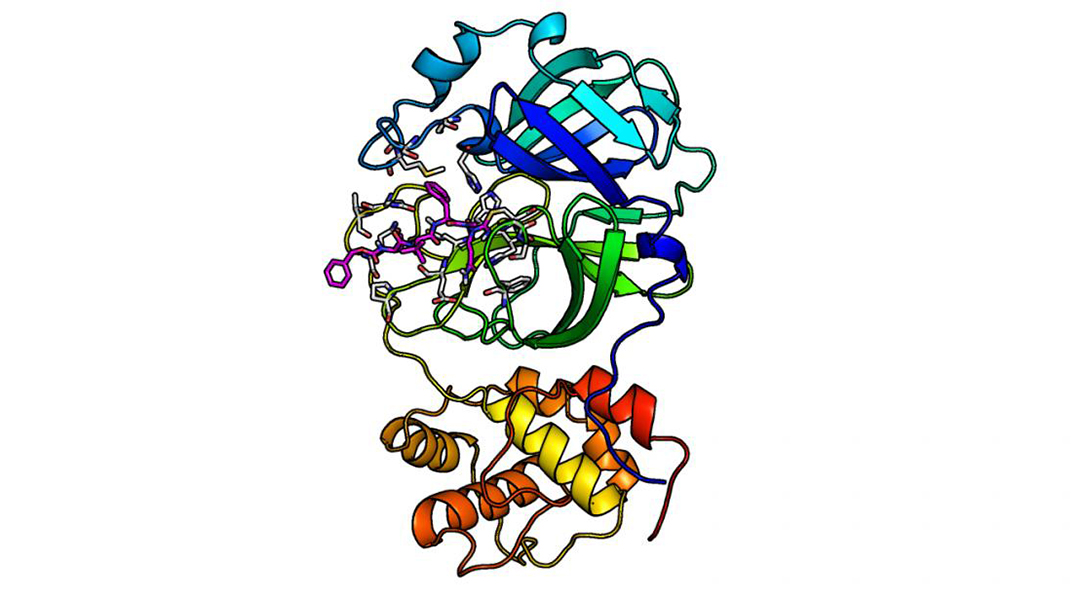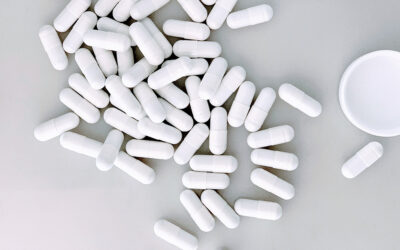Main protease of the coronavirus. Image credit: V. Namasivayam/Pharmazeutisches Institut/Uni Bonn
A research team of pharmacists at the University of Bonn has discovered two families of active substances that can block the replication of the SARS-CoV-2 coronavirus in a proof-of-concept study published in the journal Angewandte Chemie. Extensive clinical trials are still required for their further development as therapeutic drugs, but the team is hopeful.
Given the scale and danger posed by the current COVID-19 pandemic, a strategy involving multiple points of attack are required to bring the virus under control; this includes vaccines as well as therapeutics that can minimize the risk and rate of hospitalization as a result of infection with SARS-CoV-2.
In order for the SARS-CoV-2 coronavirus to replicate, it relies on a key enzyme, the main protease. The virus first has its genome translated from RNA into a large protein strand. The viral main protease then cuts this protein chain into smaller pieces, from which the new virus particles are formed. “The main protease is an extremely promising starting point for coronavirus drug research,” said Professor Christa E. Müller of the Pharmaceutical Institute at the University of Bonn. “If this enzyme is blocked, viral replication in the body’s cells is stopped.”
The pharmaceutical chemists designed a large number of potential inhibitors based on the structure of the main protease and the mechanism by which the important virus-replicating enzyme works. “A suitable inhibitor must bind sufficiently tightly to the main protease to be able to block its active site,” said Professor Dr. Michael Gütschow, who heads an independent research group on such inhibitors at the Pharmaceutical Institute of the University of Bonn.
Fluorescent test system
Then the experimental phase began where the researchers developed a new test system for high-throughput screening. They offered the main protease a substrate to which a reporter molecule was coupled. When the protease catalytically cleaved this coupling, the fluorescence of the product was measurable. However, if a simultaneously administered inhibitor successfully blocked the activity of the protease, there was no fluorescence.
“For most of the test compounds, we observed no enzyme inhibition. But on rare occasions in our comprehensive tests, fluorescence was suppressed. These were the hits we had hoped for in our search for inhibitors of the viral protease,” said Gütschow.
Like chewing gum at the catalytic center
The researchers’ high-throughput screening showed two classes of drugs that appeared to be particularly promising. Customized compounds of both classes were then newly synthesized. They stick to the main protease like chewing gum and block the crucial catalytic center, which prevents the main protease from preparing the virus replication.
“Some of the compounds even have another effect,” Müller explained. “They also inhibit a human enzyme that helps the virus enter body cells.”
The participants contributed very different expertise to the study. “The best compounds represent promising lead structures for drug development,” added Müller.
However, extensive clinical trials have yet to prove whether these candidates also inhibit SARS-CoV_2 replication in humans.
Reference: Julian Breidenbach, et al., Targeting the Main Protease of SARS‐CoV‐2: From the Establishment of High Throughput Screening to the Design of Tailored Inhibitors, Angewandte Chemie Int. Ed. (2021). DOI: 10.1002/anie.202016961
Adapted from press release provided by the University of Bonn

















